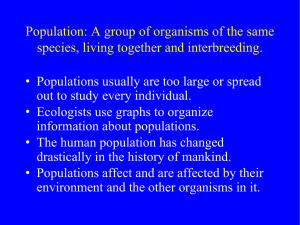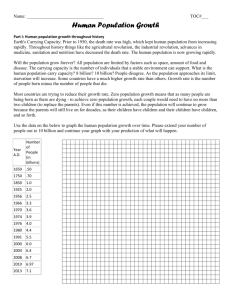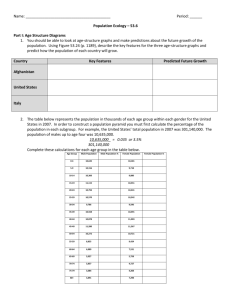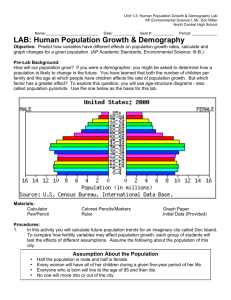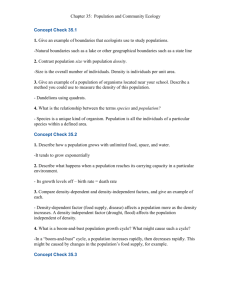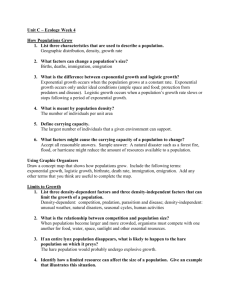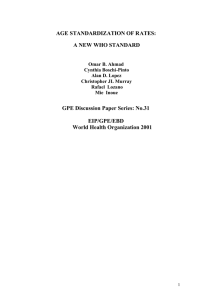Name:
advertisement
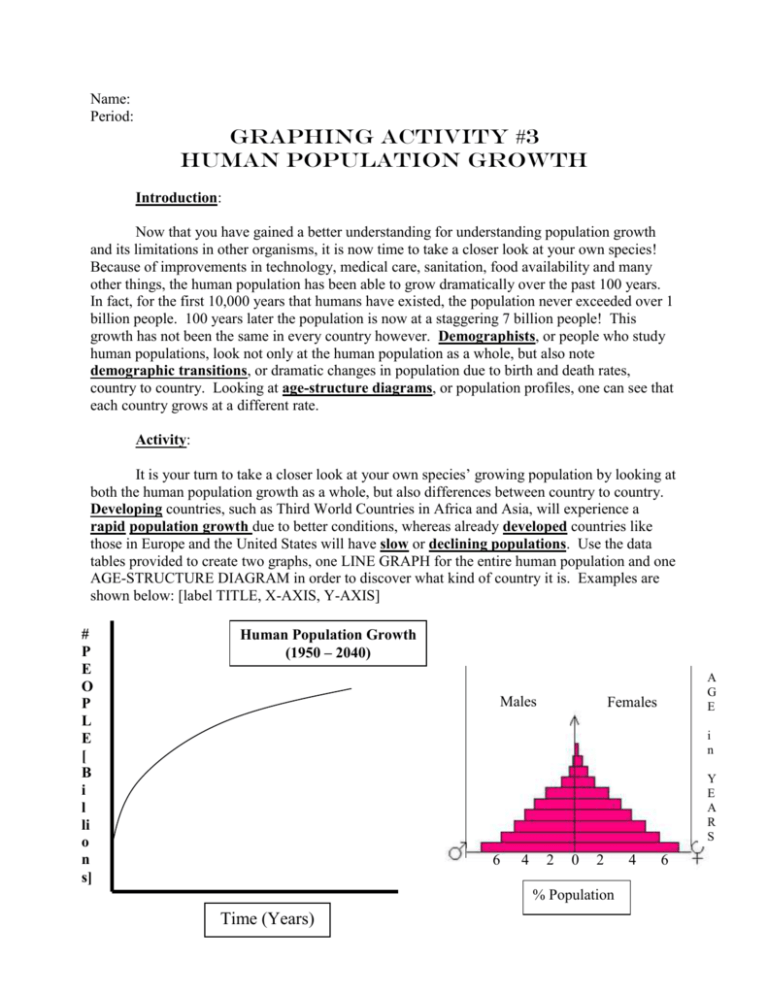
Name: Period: Graphing Activity #3 Human Population Growth Introduction: Now that you have gained a better understanding for understanding population growth and its limitations in other organisms, it is now time to take a closer look at your own species! Because of improvements in technology, medical care, sanitation, food availability and many other things, the human population has been able to grow dramatically over the past 100 years. In fact, for the first 10,000 years that humans have existed, the population never exceeded over 1 billion people. 100 years later the population is now at a staggering 7 billion people! This growth has not been the same in every country however. Demographists, or people who study human populations, look not only at the human population as a whole, but also note demographic transitions, or dramatic changes in population due to birth and death rates, country to country. Looking at age-structure diagrams, or population profiles, one can see that each country grows at a different rate. Activity: It is your turn to take a closer look at your own species’ growing population by looking at both the human population growth as a whole, but also differences between country to country. Developing countries, such as Third World Countries in Africa and Asia, will experience a rapid population growth due to better conditions, whereas already developed countries like those in Europe and the United States will have slow or declining populations. Use the data tables provided to create two graphs, one LINE GRAPH for the entire human population and one AGE-STRUCTURE DIAGRAM in order to discover what kind of country it is. Examples are shown below: [label TITLE, X-AXIS, Y-AXIS] # P E O P L E [ B i l li o n s] Human Population Growth (1950 – 2040) Males A G E Females i n Y E A R S 6 4 2 0 2 % Population Time (Years) 4 6 Part I: Entire Human Population Data Year Population (Billions) 1950 1965 1980 1995 2010 2025 2040 2.0 3.5 4.7 5.8 6.8 7.8 8.6 PartII: Age-Structure Diagram Data Age Range % Males % Females 0-9 10-19 20-29 30-39 40-49 50-59 60-69 70+ 14 13 7 5 3 2 1.5 1 13 12 7 6 3 2 1.5 0.8 REMEMBER: Space your numbers out evenly! Each line up should be the SAME amount. Do not simply just put the information given to you on your data table as your labels (UNLESS it is in equal amounts). Post-Activity Questions: 1. In the overall human population growth, between what years do you notice the MOST amount of growth? How do you know this? 2. What seems to happen over time to the RATE of population growth (the speed at which the population grows)? How do you know this? 3. In the Age-Structure Diagram, describe what you are seeing. In what age group(s) is the majority of the population? Where is it the least? 4. Is this Age-Structure Diagram an example of a DEVELOPING or DEVELOPED country? How do you know? Give an example of this type of country. 5. Why would a developing country experience a great amount of population growth, and why a developed country would not?

